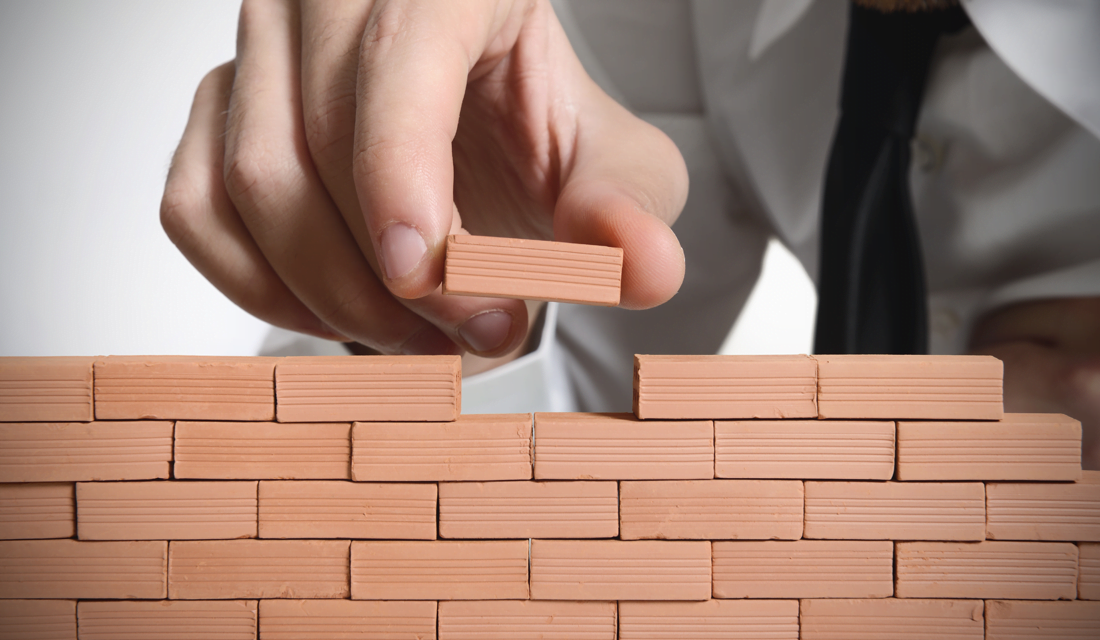Trump tariffs – an inflationary tax paid by Americans
Trump’s nationalistic agenda has seen the U.S. border shrinking for both people and goods. This is of particular concern to California since we are home to the highest number of international immigrants and a number of major U.S. ports and industries reliant on international cooperation.
How will Trump’s barriers impact California’s real estate market? Read on for an explanation and analysis of the changes ahead.
Immigration blocks
In 2017, Trump ended the Deferred Action for Childhood Arrivals (DACA) program. He set a March 2018 deadline for Congress to come up with an alternative solution to prevent the deportation of the 800,000 “Dreamers” in the U.S. under the program. This deadline has come and gone and several courts are still deciding on whether the DACA program may continue.
The outcome of DACA has immense importance in California, as one in four of the nation’s Dreamers live here. These 200,000+ individuals and their families contribute to California’s economy at every level, including the housing market.
Roughly 31,000 Dreamers own homes in California. These young adults were illegally in the U.S. as children and have gone on to be productive, home-owning members of society. But with their legal status now expiring, some will be forced to leave.
Related article:
What happens when the 31,000 Dreamers who own homes in California leave?
Further, those who are not forced to leave may leave of their own volition due to the harsh rhetoric surrounding immigrants. This rhetoric has already caused a dip in lawful immigration into the U.S., not good for California’s many industries which rely on foreign talent.
For example, consider Silicon Valley where nearly three-quarters of its tech workforce are foreign-born. Now, top talent is looking elsewhere due to the uncertainty of Trump’s immigration policies. Even some U.S.-based companies are setting up offices in neighboring Canada to capitalize on international worker talent.
Closer to home for real estate professionals, construction workers are experiencing a worker shortage. An immigrant-heavy sector, this shortage is only getting worse while workers are exiting. This shortage contributes to higher construction costs and longer project times, holding back California home inventory from gaining ground against homebuyers’ insatiable appetites for new homes.
Trump tariffs harm Americans
Trump isn’t just closing the borders against people. He’s also making moves to keep imported goods from reaching U.S. consumers.
Since his inauguration, Trump has enacted three major tariffs on imported goods:
- lumber imported from Canada in April 2017;
- solar components and washing machines in January 2018; and
- steel and aluminum in March 2018.
Trump’s latest trade barriers are tariffs of 25% on imported steel and 10% on imported aluminum.
Trump has said these tariffs will encourage consumers to purchase U.S.-made goods. He also claims his latest set of tariffs on imported steel and aluminum are necessary for “national security.”
However, the new tariffs have so far only angered U.S. allies and are set to reduce cooperation between the U.S. and key allies in Europe and Asia.
Here in the U.S., Republican lawmakers from Texas — the state to be most impacted by the new steel and aluminum tariffs — are nervous about the trade war Trump is moving toward with these tariffs.
Trump himself has stated his eagerness for a trade war, which he says will be “easy to win.” Republicans, Democrats and leaders from other nations disagree, as trade wars don’t produce many winners, primarily losers. (Luckily for Trump, he doesn’t need permission from lawmakers to impose his tariffs).
For this steel and aluminum decision, the winners are undoubtedly the U.S. steel and aluminum community. But everyone else — from the manufacturers who rely on less costly steel from overseas to the consumers who will ultimately pay more for the same products — loses.
Putting things in perspective, employees of the steel and aluminum industry number 140,000 nationwide. Employees of companies that will be harmed by higher prices due to their reliance on steel number 6,500,000.
But, as we are a journal for California real estate professionals, we need to ask — how does all of this impact California real estate?
The real estate impact
Shrinking borders ultimately harms U.S. consumers. But what about real estate?
Trump’s reasoning for these tariffs is that raising costs on certain foreign imports will give U.S.-based producers a boost over the foreign competition. But this reasoning goes against the advice of his economic advisers, and has sent financial markets into turmoil.
In reality, prices will go up for goods across the economy. The American International Automobile Dealers Association President says: “Tariffs are taxes, and the American taxpayer will pay the cost of a trade war… Even with limited exceptions, tariffs will raise the sale prices of new vehicles.”
For the housing market, this means more expensive homebuilding costs. In February 2018, the average framing lumber composite price was $541, up 34% from $404 a year earlier according to the National Association of Home Builders (NAHB).
Builders are adjusting to higher prices by:
- increasing the premium on newly built homes; and
- slowing construction.
The chairman of the NAHB spoke out against the latest tariffs in a statement, saying:
“Given that home builders are already grappling with 20 percent tariffs on Canadian softwood lumber and that the price of lumber and other key building materials are near record highs, this announcement by the president could not have come at a worse time.”
This is a big problem in California, where construction is already far behind where it needs to be to meet demand. In 2017. 111,800 housing units were started in California, an 11% increase over 2016. But compare 2017 construction to the historical average of 169,000 new starts annually.
The result of California’s struggling construction industry has been insufficient housing for the rising population. As inventory has shrunk, home sales have dwindled, causing prices to rise out of reach for many renters who are now shut out of homeownership. Not good for real estate professionals.















Carrie, Thank you for your clear-eyed observations and reporting. Everything you said is simple and verifiable. I am sure, however, that the Trolls will be out in force once again labelling the truth as anti-trump conspiracy and Carrie Reyes as evil intellect bent on ruining the entire real estate industry by having the unmitigated brightness to make basic economic and political observation showing where those influences cross-roads with our real estate industry.
Few others may thank you. But I do. Thank you.